ISEP
ISEP – integrated sport development planning
Sport development planning
Sport development planning is a targeted methodical procedure to secure the infrastructural framework conditions (space, offer and organisation) for sport and physical activity of the population. It includes:
- Creation of necessary empirical foundations (stock and demand determination)
- Setting objectives, priorities and actions
- Coordination with all relevant interest groups
- Quality assurance and evaluation
Integrated sport development planning (ISEP)
ISEP is a scientifically based approach to meet the above-mentioned current requirements for modern and sustainable municipal infrastructure development in the field of sport and physical activity.
At the same time, ISEP is a very application-oriented approach, i.e. it should be appropriate to the current problems of municipal sports practice and lead to concrete solutions.
Why ISEP?
ISEP combines a methodically elaborated sports facility needs analysis for the entire population of a municipality with a cooperative planning approach that ensures a sustainable consensus among citizens, decision-makers and experts on the goals and measures of municipal sports development in line with Local Agenda 21.
With the sports development plan, a municipality creates the basis for modern sports development planning. The promotion of sport and physical activity among the population has an important function in strengthening the population in the city because of the associated variety of educational and experiential opportunities as well as health and social effects.
Demand-oriented sports and exercise areas play a central role in this. They are an important “soft location factor” and an essential infrastructural prerequisite for balanced and sustainable urban and regional development.
Assessment
Compilation of the data:
- Population structure/development and school development
- Existing sports facilities
- Spaces for exercise (e.g. football grounds, jogging tracks, playgrounds)
- Sports clubs
- Other sports providers (e.g. commercial fitness studios)
Needs analysis
- Analysis of demand and supply structures
- Base modules
- Sports behavior study
- Sports clubs survey
- Optional modules
- Expert survey (Delphi study)
- Survey of commercial sports providers
- Base modules
- Determination of current and future requirements according to the guidelines of the Federal Institute for Sports Science (BISp) differentiated by type of sports facility (sports halls, sports fields, swimming pools, special sports facilities)
Cooperative Planning
- Stakeholder-based survey of sport development needs
- Coordination of cooperation between different interest groups
- Development of a joint action plan
- Development of visions and mission statements for sport development
- Definition and specification of objectives
- Decision on priorities
- Targeted development of implementable measures
Sport development plan
- Presentation of the initial situation, objectives and time periods as well as the planning procedure
- Summary and evaluation of the results of the assessment and needs analysis
- Summary and evaluation of the results of the cooperative planning process: catalogue of measures
- Recommendations for future sport development
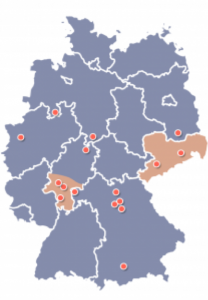
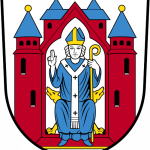
- Project location: Aschaffenburg
- State: Bayern
- Population: 69.000
- Project type: ISEP
- Period: 2008-2009
The sports development plan of the city of Aschaffenburg has taken into account both the approach of behaviour-oriented and cooperative planning and combines both in a holistic procedure of integrated sports development planning (ISEP). Thus, the specific advantages of the respective approaches could be used, but their disadvantages and one-sidedness could be avoided. In April 2008, the city of Aschaffenburg commissioned the University of Erlangen-Nuremberg, Institute for Sports Science and Sport (ISS), to develop an integrated sports development plan with a focus on sports clubs.
In 2016, the DSS was commissioned with a follow-up survey.
- Project location: Bamberg
- State: Bayern
- Population: 77.000
- Project type: ISEP
- Period: 2015
In 2015, the city of Bamberg commissioned the DSS with a sports development plan.

- Project location: Bad Homburg v.d.H.
- State: Hessen
- Population: 52.000
- Projec type: ISEP
- Period: 2007-2008
The city of Bad Homburg integrated the areas of sport, games, leisure and recreation and was able to present the sports development plan as a comprehensive planning instrument as a first result.
The sports development plan of the city of Bad Homburg considers both the approach of behavioural and cooperative planning and combines both in a holistic procedure of integrated sports development planning (ISEP). Thus the specific advantages of the respective approaches could be used, but their disadvantages and one-sidedness could be avoided. In March 2007, the city of Bad Homburg commissioned the University of Erlangen-Nuremberg, Institute for Sports Science and Sport (ISS), to prepare such an integrated sports development plan.
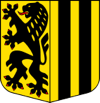
- Project location: Dresden
- State: Sachsen
- Population: 512.234
- Project type: ISEP III – sub-regional: BMVBS model project
- Period: July 2009-June 2010
- Contact: Sport facilities and baths in the city of Dresden
The DSS conducted the first ISEP in a major German city in Dresden from 2002-2003.
In 2008, the implementation of ISEP in Dresden was evaluated by the DSS and the sport development plan was updated. This project was thus the third assignment of the DSS by the Saxon state capital and was to serve in particular the sub-regional ISEP. ISEP III (FoSep) in Dresden was funded as a pilot project within the framework of the programme “Experimental Housing and Urban Development” (ExWoSt) in the research field “Sports Facilities and Sports Development”. ExWoSt is a programme of the Federal Ministry of Transport, Building and Urban Affairs (BMVBS) to promote urban development and housing policy issues and is supported by the Federal Institute for Research on Building, Urban Affairs and Spatial Development (BBSR) within the Federal Office for Building and Regional Planning (BBR).
In 2017-2018, the DSS carried out the original ISEP again.
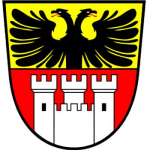
- Project location: Duisburg
- State: Nordrhein-Westfalen
- Population: 499.111
- Project type: ISEP
- Period: July 2009-June 2010
- Contact: DuisburgSport
The ISEP was implemented on behalf of DuisburgSport of the City of Duisburg in the planning period from July 2009 to June 2010. The city of Duisburg has approx. 499,000 inhabitants and is located in North Rhine-Westphalia on the Rhine and Ruhr. These two rivers divide the city into three areas, which are treated differently in the ISEP process. With the Duisburg 2027 project, the City of Duisburg had formulated long-term strategic goals for urban development, one of which was to position Duisburg as a sports city. The ISEP contributed as a sub-project to the development of strategy concepts for the land use of the three mentioned urban areas. The aim was to integrate urban development and sports development under a common mission statement. The determination of the existence and demand of sports facilities, exercise areas and sports offers was carried out according to the guidelines of the Federal Institute for Sports Science (BISp). The sports behaviour study to be conducted as part of the needs analysis was carried out in the in-house CATI laboratory under the responsibility of the Department of Sports Science and Sport. The aim of the cooperative planning was to create a comprehensive catalogue of measures as a contribution to the conception of strategies for the project Duisburg 2027 in coordination of goals, priorities and measures between the interest groups of the city of Duisburg.
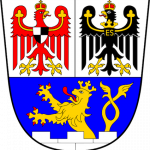
- Project location: Erlangen
- State: Bayern
- Population: 103.719
- Project type: ISEP
- Period: 2005-2006
Following the motto of the city of Erlangen in 2005 “Experience health – ERLANGEN health”, the city of Erlangen wanted to tackle an important development task: the fundamental analysis and sustainable design of its sports facilities and exercise areas with special consideration of the indoor swimming pool situation. A fundamental goal of the city of Erlangen was to develop a “demand-oriented and forward-looking municipal sports development plan” for the city. The aim was to assess the city’s sports facilities and movement area situation and include it in a sports development plan. In addition, the determination of demand according to the behavioural approach (guideline of the Federal Institute for Sports Science) contributed to the determination of the current and future demand for sports facilities in the city of Erlangen. The collected data was based on the concrete activities and ideas of the citizens in Erlangen and could thus form a basis for the long-term securing of the required sports and leisure facilities.
Due to the increasing need for fun and recreational physical activity, planning should not only focus on existing sports facilities, but also on the development of a sustainable physical activity infrastructure as a whole. The overarching goal of planning close to the citizens has been achieved through broad public participation. An integral part of the planning process was the involvement of citizens (cooperative planning). This aimed not only to use the knowledge of local conditions and the technical competence of the population, but also to achieve a higher acceptance of the implementation of measures among the population.
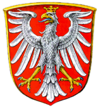
- Project location: Frankfurt am Main (City)
- State: Hessen
- Population: 664.000
- Project type: ISEP
- Period: July 2009-June 2010
- Contact: Sport Office of the city of Frankfurt am Main
The ISEP was implemented on behalf of the Sport Office of the City of Frankfurt/M. in cooperation with the Institute for Cooperative Planning and Sport Development (IKPS) in the planning period from July 2009 to June 2010. The primary objective of the ISEP in Frankfurt was to draw up a future-oriented and sustainable sports development plan for the city that would meet the needs of the city. The sports behaviour study was carried out in the in-house CATI laboratory under the responsibility of the DSS. In the further course a cooperative planning for the coordination of goals, priorities and measures between the interest groups of the city of Frankfurt/M. followed. The aim of this planning was to draw up a comprehensive catalogue of measures to ensure the present and future provision of basic services as well as the development of sports and physical activity opportunities.
- Project location: Region Frankfurt Rhein/Main
- States: Hessen, Bayern, Rheinland-Pfalz
- Population: 4,4 Mio.
- Project type: ISEP
Sport development planning should not only be carried out within municipal boundaries, but should also be opened up to regional planning perspectives. This has been a demand for some time both from the overriding political side (Conference of Sports Ministers) and from scientific experts. Due to structural requirements and local self-interests, however, regional sport development plans have hardly been realised to date.
The Frankfurt Rhein-Main, region, which depending on the definition comprises between 2.2 million (Planning Association for Conurbations) and 5.5 million (Metropolitan Region) inhabitants, has already drawn up a concept for the realisation of sports development planning in a preliminary study carried out by the DSS together with the IKPS in 2006.
The first modules of this concept have now been implemented in this project – again in cooperation between DSS and IKPS. This included a representative population survey including a sports behaviour study with a sample of 4000 interviews carried out using the CATI laboratory of the DSS, as well as an expert survey.
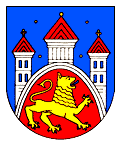
- Project location: Göttingen
- State: Niedersachsen
- Population: 127.917
- Project type: ISEP with population participation
- Period: September 2011 – June 2012
- Contact: Göttinger Sport und Freizeit GmbH & Co. KG
For the continuation of the sports concept of the city of Göttingen, which was first adopted in 1997, the Göttinger Sport und Freizeit GmbH & Co. KG (GoeSF), together with the Göttingen City Sports Association, the Lower Saxony State Sports Association and the Department of Sports Science and Sport at the University of Erlangen-Nuremberg, carried out an integrated sports development plan (ISEP). In this context, the sports concept of the City of Göttingen, which contains the sports policy principles and guidelines for the development of sports organisation, sports facilities and the construction of sports facilities, should be fundamentally revised.
In addition to the detailed analysis of sports and exercise areas, both the clubs and the population were surveyed about sports facilities and behaviour. For the population survey, 2,500 households were contacted. An innovative aspect of the ISEP in Göttingen was the active participation of the population through six district forums. The project executing agencies hoped that this approach would enable the population to accompany the project more intensively and thus play an active role in shaping the sports policy decision. The first district conferences were held at the end of January 2012. Delegates from these forums also took part in the cooperative planning from February to April 2012 and represented the interests of the population.
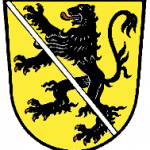
- Project location: Herzogenaurach
- State: Bayern
- Population: 22.917
- Projec type: ISEP
- Period: 2014
In spring 2014, the city of Herzogenaurach commissioned the DSS to carry out an integrated sports development planning.
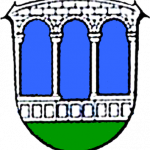
- Project location: Kaufungen
- State: Hessen
- Population: 12.644
- Project type: ISEP
- Period: 2001-2002
On the basis of the overall development plan Kaufungen 2000plus, the following development goals have been formulated, which are closely interwoven with the topic of sport development in the sense of integrated sport development planning:
- The range of opportunities for sports and leisure activities should be adapted to the needs of the customers.
- The areas for landscape-based recreation should be preserved and their attractiveness further improved.
- In addition to its function as a residential community in the Kassel area, Kaufungen is also to acquire independent significance as a sub-centre with a central role.
A fundamental objective of the municipality of Kaufungen was to carry out planning to secure the existence and optimisation of sports facilities for both organised and non-organised sport. The aim was to record the sports facilities and physical activity area situation of the municipality and to include it in a sports development plan. The determination of demand according to the behaviour-oriented approach of the Federal Institute for Sports Science on the current and future demand for sports facilities in the municipality of Kaufungen was decisive at this point. The collected data of the assessment were based on the concrete activities and ideas of the citizens in Kaufungen. The sports development plan was to form the basis for the long-term securing of the necessary sports and leisure facilities.
Due to the increasing need for playful and recreational physical activity, the focus of the planning was not only on the existing sports facilities, but also on the development of a sustainable physical activity infrastructure as a whole. The overarching goal of planning close to the citizen was achieved through broad public participation. An integral part of the planning process was the involvement of citizens (cooperative planning). This aimed not only to use the knowledge of local conditions and the technical competence of the population, but also to achieve a higher acceptance of the implementation of the measures among the population.
However, the focus was not only on the development of the (core) sports facilities. The planning has met further requirements with the aim of creating a community suitable for exercise or landscapes open to physical activity with new areas for exercise. The provision of the population with play, sport and exercise opportunities in the municipality was geared to the needs of the municipality and the population. Ultimately, it was also a matter of mobilising the entire community to make purchases for sport, exercise and recreation – under the motto “Sport for all”.
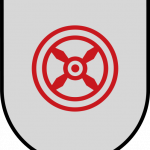
- Project location: Melle
- State: Niedersachsen
- Population: 46.035
- Project type: ISEP
- Period: 2013-2014
In the summer of 2013, the city of Melle commissioned the DSS to carry out an integrated sports development planning. The sports development plan was handed over to the city in August 2014.
- Project location: Sängerstadtregion
- State: Brandenburg
- Population: 42.000
- Project type: ISEP
- Period: 2013-2014
The municipal association of the Sängerstadtregion in the south of Brandenburg, consisting of the central centre of Finsterwalde, the two towns of Doberlug-Kirchhain and Sonnewalde as well as the two offices of Elsterland and Kleine Elster, was a recipient of subsidies under the urban development programme “Smaller Cities and Municipalities” (KLS). This programme promoted measures to safeguard the provision of livelihoods in the municipalities.
Like comparable regions, the municipal association of the Sängerstadtregion is also confronted with serious demographic structural changes and at the same time with a shortage of municipal financial resources. At the same time, the municipalities in the Sängerstadtregion wanted to focus more closely on sports development in addition to other fields of action, which is expressed in this sports development concept.
The impetus for this was provided by the Sängerstadtregion – Cultivated land with energy 2010/2012, with the aim to create a basis and recommendations for the development of sports facilities, exercise areas and sports organisation. For this purpose, the project consortium GRUPPE PLANWERK Berlin / University of Erlangen-Nuremberg was commissioned with the preparation of the integrated sports space development concept for the Sängerstadtregion following a competitive procedure in March 2013.
The planning procedure comprised the following components:
- Assessing and analysing the sports infrastructure,
- Population, sports clubs and schools surveys,
- Two workshops as part of cooperative planning,
- Preparation and coordination of a concept of measures,
- Accompaniment of the planning process by a working group, consisting of the relevant representatives of the communal association and representatives of the administrative district, coordinated and moderated by employees of the office ContextPlan from Berlin.
Rütten, A., Nagel, S., & Kähler, R. (2014). Handbuch Sportentwicklungsplanung. Schorndorf: Hofmann.
Rütten, A. & Frahsa, A. (2012). Qualitätsmanagement zur Verbesserung von Bewegungsverhältnissen in der Gesundheitsförderung. In: Bewegungstherapie und Gesundheitssport 28. Nr. 1, S. 6-10 [doi>10.1055/s-0031-1283890].
Rütten, A. & Frahsa, A. (2011). Bewegungsverhältnisse in der Gesundheitsförderung: Ein Ansatz zur theoretischen Konzeptualisierung mit exemplarischer Anwendung auf die Intervionspraxis. In: Sportwissenschaft 41. Nr. 1, S. 16-24.
Rütten, A., Frahsa, A., Engbers, L., Suomi, K. & Kolb, M. (2011). on behalf of the IMPALA project (2011). Proposed European Guidelines. Improving Infrastructures for Leisure-Time Physical Activity in the Local Arena towards social equity, inter-sectoral collaboration and participation. Bd. 1 1. Aufl. Erlangen: self-published.
Rütten, A. & Ziemainz, J. (2010). Kommune als Sportraum – Sport- und Stadtentwicklung trifft auf Gesundheitsförderung. In: Landschaftsarchitekten. bdla Bund Deutscher Landschaftsarchitekten. Nr. 4, S. 14-15.
Rütten, A. & Ziemainz, J. (2010). Smart Green, Teil 1. Sportentwicklung und Gesundheitsförderung – Eine sportwissenschaftliche Perspektive. In: FreeLounge, Fachmagazin für kommunale Frei-Räume. Nr. 4, S. 45-47.
Rütten, A. & Ziemainz, J. (2010). Sportentwicklung und Gesundheitsförderung – Eine sportwissenschaftliche Perspektive. In: Stadt + Grün. Nr. 4, S. 23-28.
Rütten, A., Frahsa, A. & Abu-Omar, K. (2010). Zur Entwicklung von politischen und infrastrukturellen Ansätzen in der Gesundheitsförderung durch Bewegung. Eine internationale Analyse. In: Spectrum der Sportwissenschaften 22 (2010) Nr. 2, S. 18-31.
Rütten, A., Schröder, J. & Ziemainz, H. (2006). Sportstätten. In H. Haag & B. Strauss (Hrsg.) Themenfelder der Sportwissenschaft. Band VI (S. 361-376) Schorndorf: Hofmann.
Schröder, J. (2005). Nachhaltigkeit und Sport – Auf der Suche nach Indikatoren zu einer nachhaltigen Sportentwicklung. In K. Grossmann, U. Hahn & J. Schröder (Hrsg.) im PRINZIP NACHHALTIGKEIT. Akteurskonstellationen und Handlungsspielräume in interdisziplinärer Betrachtung. (S. 96-115) München: Hampp.
Rütten, A. & Schröder, J. (2005). Kommunale Sportentwicklungsplanung. In Deutscher Sportbund (DSB) (Hrsg.) Sport gestaltet Zukunft mit den Menschen vor Ort. Dokumentation des Zukunftskongresses am 2./3.12.2004 in Bremen. (S. 94-98) Frankfurt/M.: DSB.
Abu-Omar, K., Rütten, A. & Schröder, J. (2004). Gesunde Städte – Bewegungsräume zum Aufwachsen. In E. Balz & D. Kuhlmann (Hrsg.) Sportengagement von Kindern und Jugendlichen. (S. 99-112) Aachen: Meyer & Meyer.
Schröder, J. & Rütten, A. (2004). Evaluation kommunaler Sportentwicklung und Gesundheitsförderung – Zum Problem der Messung bevölkerungsbezogener Interventionseffekte am Beispiel eines Modellprojektes zur kommunalen Sportentwicklungsplanung. In A. Woll, W. Brehm & K. Pfeifer (Hrsg.) Intervention und Evaluation im Gesundheitssport und in der Sporttherapie. (S. 209-218) Hamburg: Czwalina.
Rütten, A., Schröder, J. & Ziemainz, H. (2003). Handbuch der kommunalen Sportentwicklungsplanung. Aachen: Meyer & Meyer Verlag.
Rütten, A. (2002). Kommunale Sportentwicklungsplanung. Ein empirischer Vergleich unterschiedlicher Ansätze. Sportwissenschaft 32(1), 80-94.
Schröder, J. & Ziemainz, H. (2002). Bestands- und Bedarfsanalyse als Voraussetzung einer effektiven Sportentwicklungsplanung am Beispiel einer sächsischen Kommune. In A. Woll, D. Illmer & K. Bös (Hrsg.), Bewegte Kommune – Gesunde Kommune. Schorndorf: Hofmann, S. 75-79.
Rütten, A. (2001). Sportverhalten und Sportstättenplanung. In Hummel, A. & Rütten, A. (Hrsg.), Handbuch Technik und Sport (S. 253-266). Schorndorf: Hofmann.
Rütten, A. (2001). Kooperative Planung. In Hummel, A. & Rütten, A. (Hrsg.), Handbuch Technik und Sport (317-326). Schorndorf: Hofmann.
Rütten, A. & Schröder, J. (2001). Integrierte Planung. In Hummel, A. & Rütten, A. (Hrsg.), Handbuch Technik und Sport (327-336). Schorndorf: Hofmann.
Schröder, J. (2001). Die bewegte Stadt – Das SpoBELi-Projekt. In H. Altenberger et al. (Hrsg.) Im Sport lernen – mit Sport leben. (S. 413-418). Augsburg: ZIEL.
Rütten, A., (1998). Kooperative Planung – ein umsetzungsorientiertes Sportstättenentwicklungskonzept. In A. Rütten/P. Roßkopf (Hrsg.), Raum für Bewegung und Sport: Zukunftsperspektiven der Sportstättenentwicklung. Stuttgart: Naglschmid, S. 41-52.
Rütten, A. & Roßkopf, P. (Hrsg.) (1998). Raum für Bewegung und Sport: Zukunftsperspektiven der Sportstättenentwicklung. Stuttgart: Naglschmid.
Wieland, H., Rütten, A., Klopfer, M. & Schrader, H. (o. J.) [1993]. Familienfreundlicher Sportplatz (Projektbericht). Stuttgart: Universität, Institut für Sportwissenschaft.
Wieland, H. & Rütten, A. (1991). Sport und Freizeit in Stuttgart. Sozialempirische Erhebung zur Sportnachfrage in einer Großstadt. Stuttgart: Naglschmid.
Wieland, H. & Rütten, A. (1991). Kommunale Freizeitsportuntersuchungen. Theoretische Ansätze, Methoden, praktische Konsequenzen. Stuttgart: Naglschmid.